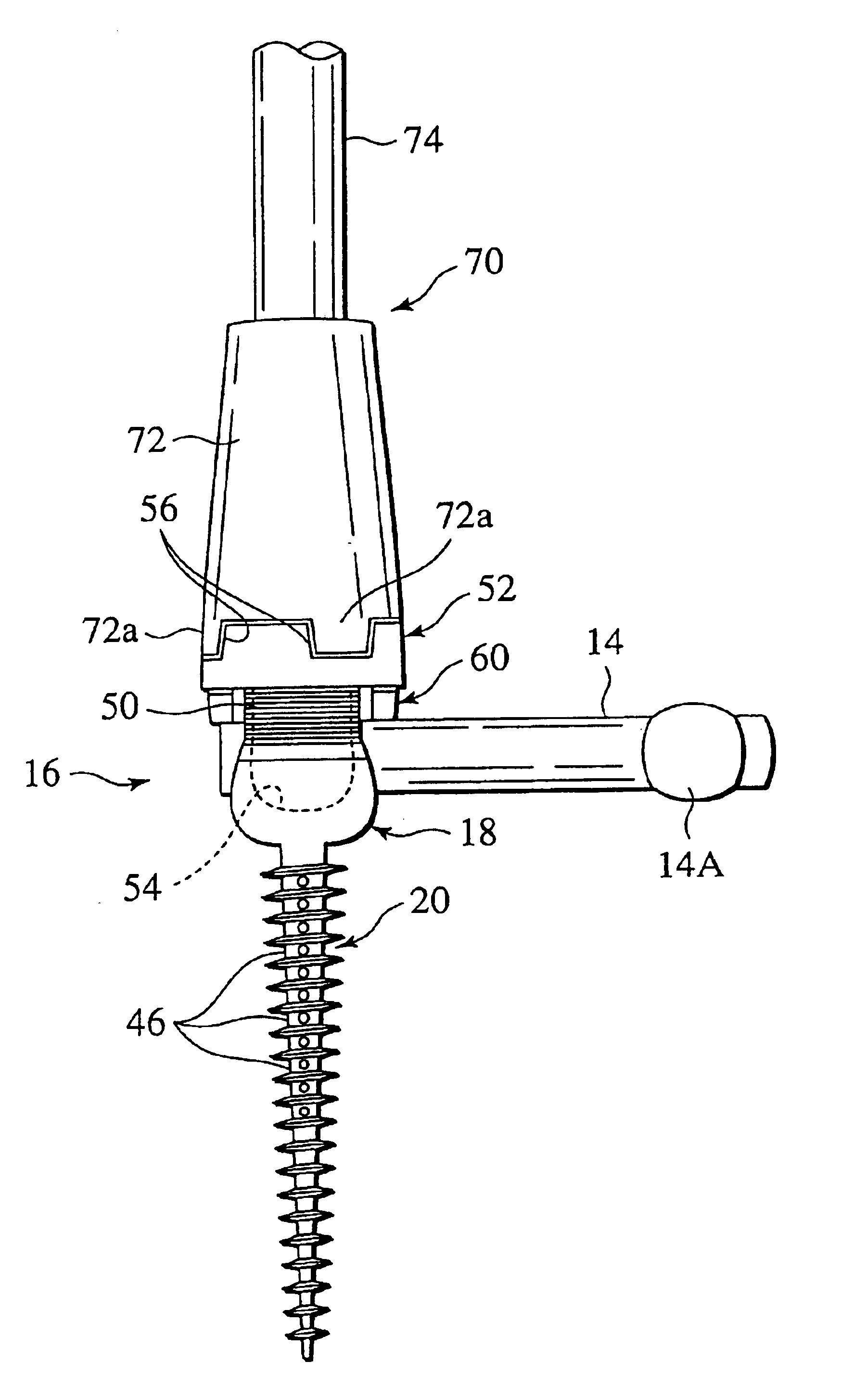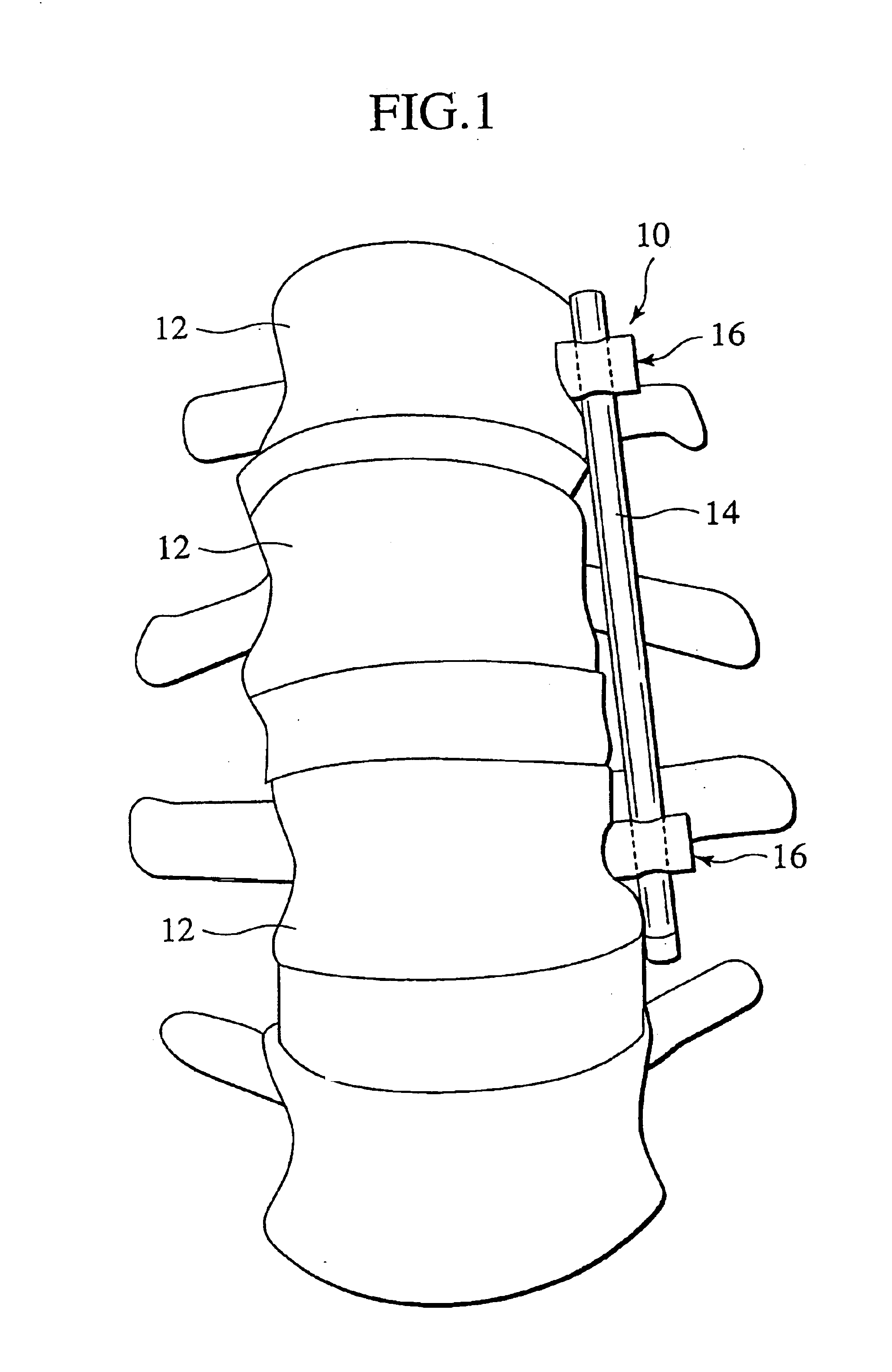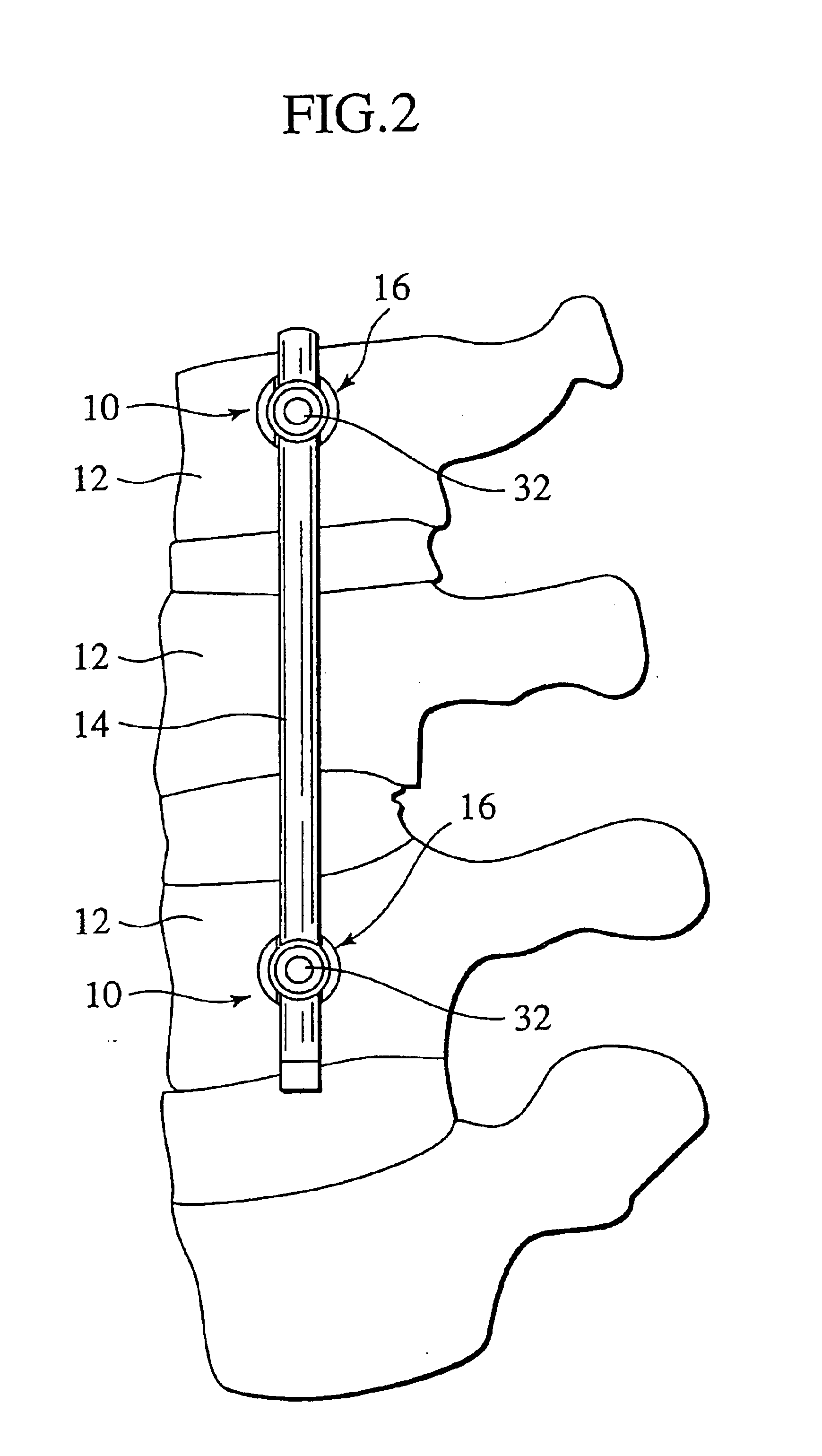Spinal implant, driver tool and nut guide
a technology for spinal implants and driver tools, applied in the field of spinal implants, can solve the problems of unstable fixation of spinal implants, unfavorable treatment of spinal implants,
- Summary
- Abstract
- Description
- Claims
- Application Information
AI Technical Summary
Benefits of technology
Problems solved by technology
Method used
Image
Examples
Embodiment Construction
[0028]Referring to the drawings and more particularly to FIGS. 1 and 2, a spinal osteosynthesis device, generally designated at 10, is shown as applied to separate vertebral bodies 12 for interconnecting plural vertebral bodies 12 in place.
[0029]The spinal osteosynthesis device 10 includes an elongated vertebral connecting rod 14 retained by a pair of spinal implants 16 of a first preferred embodiment according to the present invention. Each of the spinal implants 16 penetrates each vertebral body 12 in a manner as will be discussed below in detail. The connecting rod 14 is made of malleable, elastically deformable material having a large elastic capacity, permitting elastic deformation necessary for adaptation it to differences in alignment, angulation and depth of penetration of the implants 16.
[0030]Referring now to FIGS. 3 and 4, the spinal implant 16 includes a cylindrical implant body 18 for firmly retaining the connecting rod 14 in place, and an anchoring screw section 20 tha...
PUM
 Login to View More
Login to View More Abstract
Description
Claims
Application Information
 Login to View More
Login to View More - R&D
- Intellectual Property
- Life Sciences
- Materials
- Tech Scout
- Unparalleled Data Quality
- Higher Quality Content
- 60% Fewer Hallucinations
Browse by: Latest US Patents, China's latest patents, Technical Efficacy Thesaurus, Application Domain, Technology Topic, Popular Technical Reports.
© 2025 PatSnap. All rights reserved.Legal|Privacy policy|Modern Slavery Act Transparency Statement|Sitemap|About US| Contact US: help@patsnap.com



